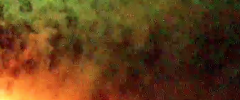TequilaKez
New Member
- Joined
- Apr 17, 2017
- Messages
- 18
- Reaction score
- 2
- Country
- Australia
Just wondering if anyone knows which models suck the least in low light. I'd mainly be using it for filming live music situations so there'd be more light than a dark street at night, but certainly no direct sunlight.
Important for my applications are:
Good optics
Decent low light performance
Gyro/accel stabilisation
High bitrate
Very minimal NR, and sharpening, or better yet, manual control of these. I realise these sensors can be very noisy, but I'd rather deal with it in post.
Value for money (so i can get more than one for different angles).
I couldn't care about:
Resolutions above 1080p (accept if it allows for simulating different focal lengths by cropping)
Sound quality.
Water proofing.
Photos / time-lapse.
'GoPro' branding etc. Weird chinese brands are fine with me.
I'm also very interested which have largest hacking/modding interest. I can't live without Magic Lantern on my Canon, and noticed some scripts for the Xiamo Yi which is exciting. There was a Magic Lantern project started for GoPro but it died soon after
Important for my applications are:
Good optics
Decent low light performance
Gyro/accel stabilisation
High bitrate
Very minimal NR, and sharpening, or better yet, manual control of these. I realise these sensors can be very noisy, but I'd rather deal with it in post.
Value for money (so i can get more than one for different angles).
I couldn't care about:
Resolutions above 1080p (accept if it allows for simulating different focal lengths by cropping)
Sound quality.
Water proofing.
Photos / time-lapse.
'GoPro' branding etc. Weird chinese brands are fine with me.
I'm also very interested which have largest hacking/modding interest. I can't live without Magic Lantern on my Canon, and noticed some scripts for the Xiamo Yi which is exciting. There was a Magic Lantern project started for GoPro but it died soon after

